Conversion Rate Optimization (CRO): Best Practices & Real-World Examples in 2024
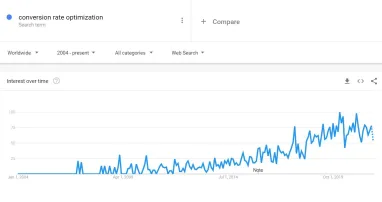
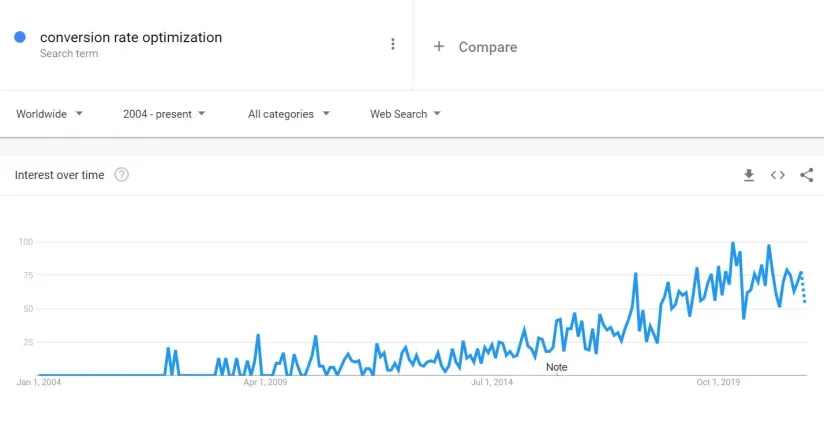
For a digital business with a low conversion rate, conversion rate improvement can be the fastest and most impactful business impact lever. And conversion rate optimization is not always straightforward. People are prone to making irrational decisions due to unconscious biases. Conversion rate optimization enables digital marketers to smartly test different website layouts, messaging and other aspects. These tests help identify and validate both obvious or counter-intuitive insights about conversion and improve website user experience.
This article focuses on conversion rate optimization (CRO) and will answer all important questions regarding CRO, from why it matters and methods to best practices of CRO. If you just want to see the vendors in this space, feel free to visit our transparent, data-driven vendor list.
What is conversion rate optimization (CRO)?
Conversion rate optimization (CRO) is the process of increasing the percentage of users who complete the desired action by collecting customer behavior data and making design or content changes on the website accordingly. Desired actions can involve purchasing a product, clicking links, subscribing to a service, adding a product to the cart, filling out a form, or requesting a demo.
The main goal of CRO is to produce more profit from existing traffic by testing variations of a webpage or process by changing the layout, messaging or the process flow.
Why is CRO important now?
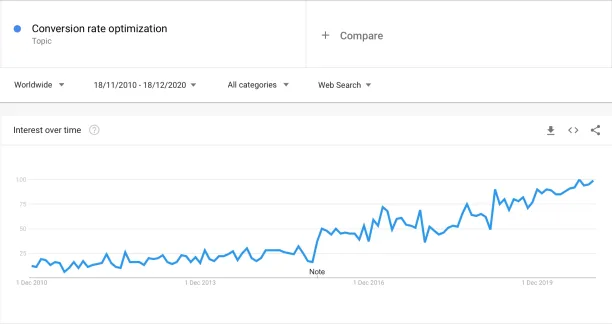
According to Google trends data, the interest in conversion rate optimization is at its highest level right now, and it is gradually increasing since 2016. This is due to two reasons:
- In the era of digitization, customer experience (CX) has become the main driver of gaining a competitive edge and optimizing a website to improve user experience can help businesses achieve better CX.
- Conversion rate is the easiest way to increase profits for a business because CRO focuses on what can be done better with what you already have rather than putting effort into creating something new. As seen below, even small increase in conversion rate can worth thousands of dollars.
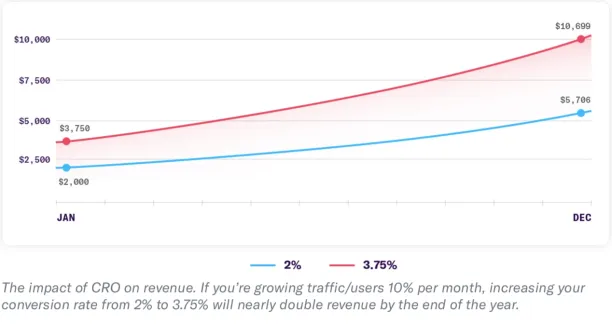
According to Bain’s 2020 Customer Experience Tools and Trends survey, 51% of companies have already adopted CRO and Bain expects this percentage to be 82% by 2023. 80% of marketers who use CRO methods are satisfied with the results as seen below:
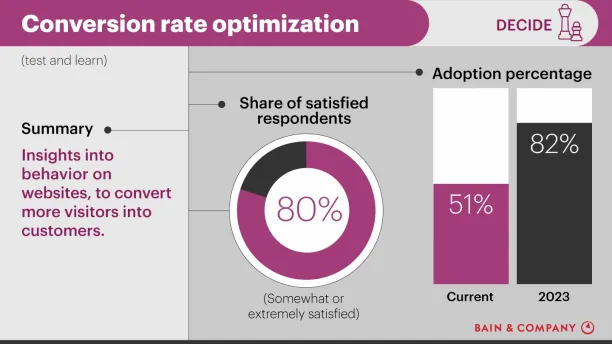
Conversion Rate Optimization Methods
Measuring results of conversion rate optimization
A/B Testing
A/B testing is a basic testing methodology where businesses create two different web page variations and send an equal amount of traffic to each. Then, they measure the number of conversions for each variation and select the one with higher conversion. It is a commonly used method for websites and chatbots. In fact, 75% of the internet retailing top 500 use A/B testing platform.
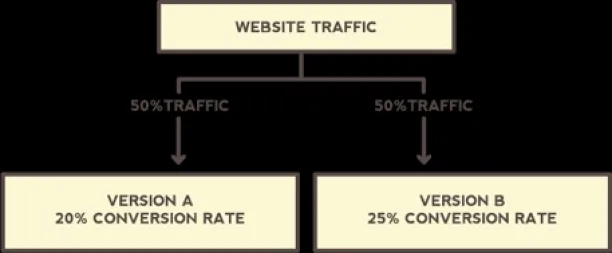
Multivariate Testing
Multivariate testing compares different variations of a webpage like A/B testing with one difference. Multivariate testing is not limited to two variations; you can test 3 and more different variations with a multivariate test. However, multivariable optimization requires larger traffic than A/B testing since you split your traffic into the number of web page variations, and each combination has to reach a certain amount of traffic to get actionable insights.
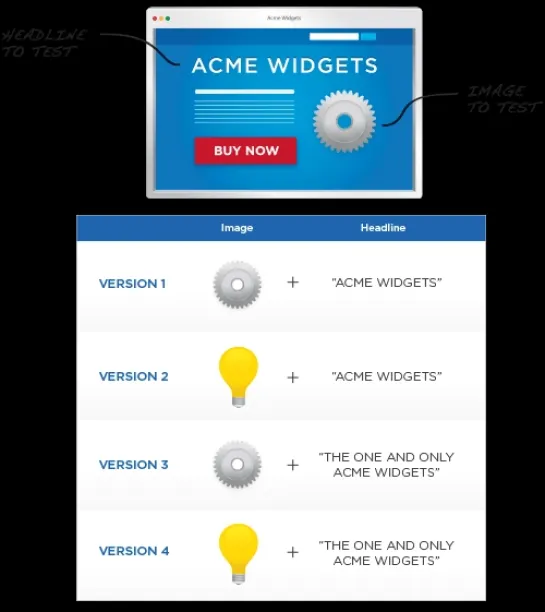
Multi-armed bandit
One challenge of multi-variate testing is that all versions get equal traffic, resulting in a significant share of customers seeing inferior versions of the webpage. Multi-armed bandit algorithms deal with this by assigning more volume to best performing versions while still ensuring that enough volume goes to other versions to ensure that different versions have statistically significant differences.
As seen in the below image, after the results of first tests are collected, multi-armed bandit testing tools prioritize the traffic for most converting variation.
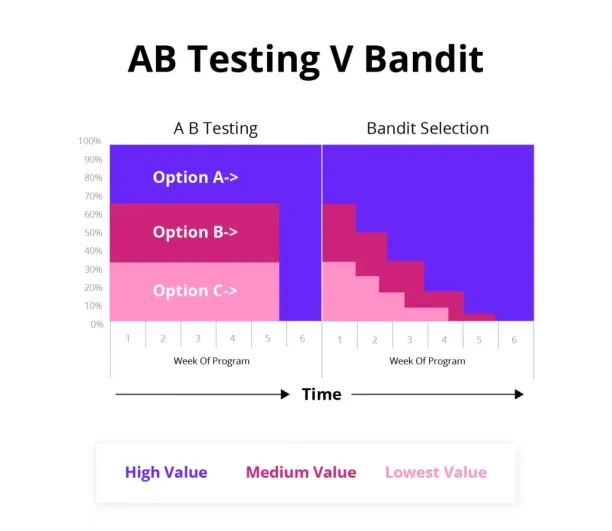
Identifying insights for CRO
Usability testing
Usability testing is a method used in user-centered interaction design to evaluate a product by testing it on users. For usability testing, businesses gather a group of people, similar to potential users of your app or website, and then make them test the product out by using it. This enables businesses to eliminate gut feeling assumptions and make data-driven decisions on the UX of their product & service.
Heatmaps
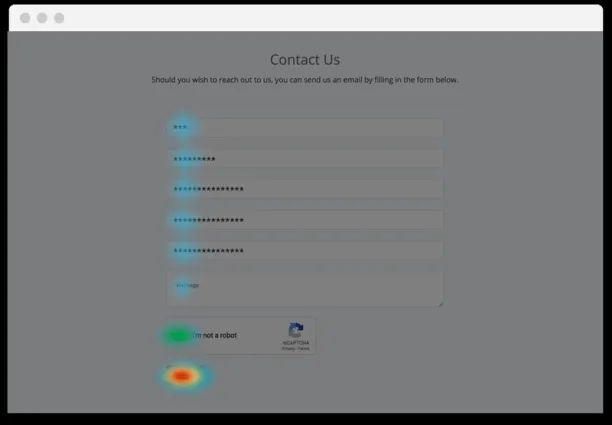
Heat maps are a color-coded graphical representation of aggregated user behavior data, including the number of clicks, scrolls, and movement on a page. Color codes are based on the level of interaction website elements get. In short, the redder the area, the more visitors interacted with it. Knowing what people are clicking on, scrolling through, or ignoring individual pages can help businesses identify what to change, where to start A/B testing, and what to improve.
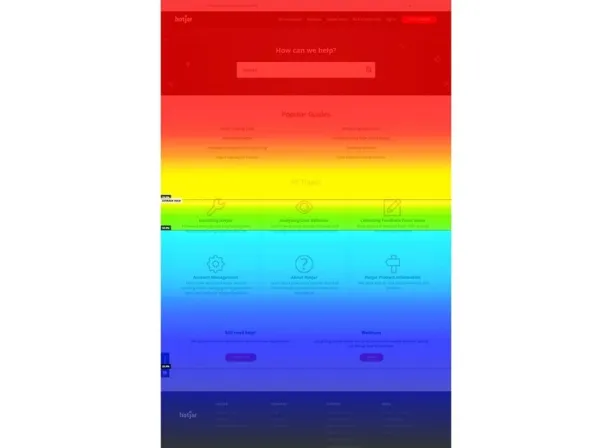
As shown above, scroll maps are a type of heatmap that shows you the exact percentage of visitors who scroll down to any point on the page. Scroll maps enable you to determine whether visitors scroll down to see desired content such as main links, buttons, and CTAs while browsing.
Screen recording
Screen recording helps you understand how visitors navigate through your website and fix the user experience issues, which will increase conversions. During session recordings, elements such as text input and form selections are also being recorded. However, information being typed in may contain personal information which may prevent companies’ GDPR compliance. Therefore companies should check their privacy and data security policies before rolling out such tools.
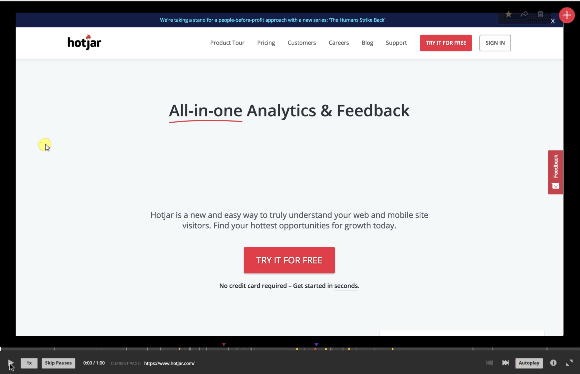
Analytics
Website analytics tools such as Google Analytics to see what is happening on the website and behavior analytics tools to understand why it is happening can help businesses measure when visitors drop off from a sales funnel.
Customer Surveys
Online reviews and website feedback tools such as on-page polls, pop-ups, and customer surveys are great opportunities to ask users about their experience with the brand to build their CRO strategy based on customers’ specific wants and needs.
What are CRO best practices?
Following typical marketing best practices as well as principles of influence such as those identified by Cialdini in Influence: Science and Practice, companies can improve CRO.
Marketing best practices
Improve user experience
Customers are the driver of companies’ revenue. Therefore making customer-centric changes is crucial. Some examples can be
- Clear communication: Businesses should leave no concerns on the prospect’s minds. They should establish clear communication with user-friendly navigation to answer questions on prospects’ minds to introduce your company to customers. A conversion funnel through prospects’ eyes require answers to the following questions sequentially:
- What do you do?
- Why should I care?
- How do I believe you?
- Where do we begin?
- Fewer fields on forms: Nobody likes spending time filing forms where they may need to give personal information. Minimizing required fields can help businesses improve form filling rates.
- Search bars: If the user knows exactly what he wants on the website, let him access it directly by including a search bar in your site.
Collect sufficiently large datasets
Assume you are conducting A/B tests for two variations of your website, and one design has a significantly better conversion rate than the other. It is not enough to choose one design over another unless the sample size of data applies to the statistical hypothesis tests.
Using principles of influence/cognitive biases
Nudging users to make an action highlighting scarcity
Online travel booking sites are the most common application of creating an urgency to make customers feel like they need to make a purchase decision quickly. Most travel booking sites offer limited-time discounts to users. This practice encourages people to book it now rather than later.
Yet, limited-time offers are not the only way to rush customers to make an action. For instance, another example is from Booking.com, which uses this technique by providing additional information on booking times, including answers to the following questions:
- How many people are looking at the hotel for the same day?
- How many rooms are left?
- How many times the hotel you are looking for book recently?
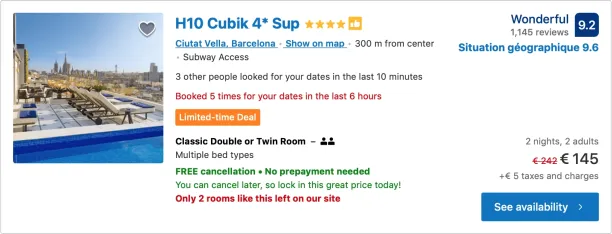
Another example is from e-commerce Amazon showing how long the discount lasts to make the call to action, Add to Cart, more tempting.

Social Proof & authority
According to a study, on average, testimonials on sales pages increase conversions by 34%. People tend to look for social proofs that enable them to trust your company for online purchases. Some social proof examples are
- Customer testimonials & reviews
- Social signals via Facebook, Twitter, Pinterest, and LinkedIn
- Displaying the number of customers
- ISO certificate to avoid security concerns
- Awards & Mentions from reputable companies
Reciprocity
Reciprocity is the practice of providing a complimentary benefit to increase the customers’ likelihood to purchase. This is based on the psychological notion that people want to help those that have provided them some form of help or support. Most B2B companies are already using this technique with their whitepapers, case studies and other type of interactive content where they collect contact information of visitors in exchange for information.
Likeability
Cialdini notes that physical attractiveness, compliments, similarity between buyer and the sales rep can all contribute to the likeability of a sales rep which helps increase sales closing rates. Similarly, likeable brands could lead to better sales. Brands like Mailchimp and Slack put significant effort to create likeable brands by
- a likeable logo, typeface and a design that complements them
- witty and informal product copy that follows brand guidelines. For example, Mailchimp describing ease of use as “easier than eating a banana”. Their brand guidelines lay out how they achieve engaging product copy.
- gifs and images, like the mass email send button
What are the average conversion rates of e-commerce sites?
Comparing existing conversion rates to industry averages can help organizations understand where to start optimizing. Yet, comparing products in similar sectors is important. Below are images from three different e-commerce industry reports published in 2020 that may help you set an objective to optimize for 2021.
Conversion rates for e-commerce by industry
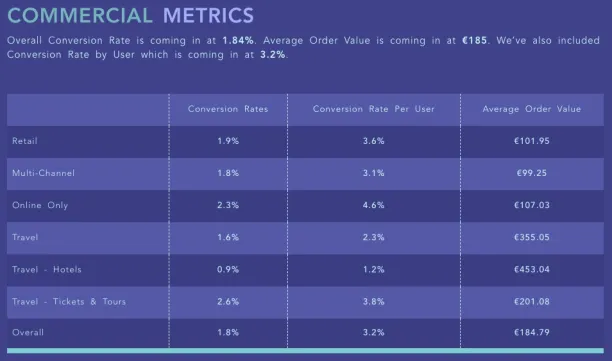
E-commerce Conversion Rate by Product
When it is benchmarked by product type, gifts (4.9%) and health & pharmacy (4.6%) products have the highest conversion rate, while consumer electronics’ conversion rate is only 1.4%.
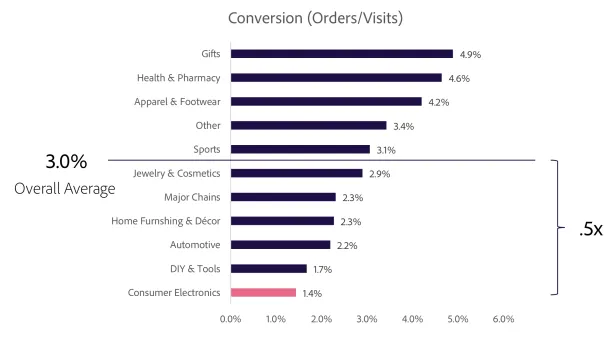
E-commerce Conversion Rate by traffic source
Though the below graph is only for e-commerce sites, it is common for traffic that comes from social channels to have the lowest conversion rate than other channels.
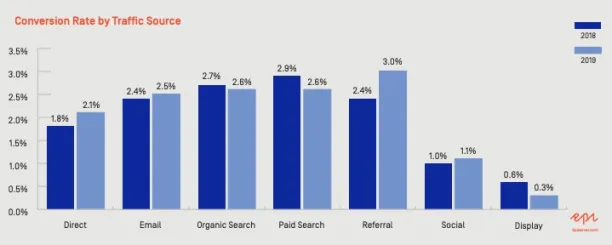
What are real-world examples of conversion rate optimization practices?
Various companies and institutes leverage conversion rate optimization techniques. Some examples are
The 2008 Obama Presidential Campaign drove a higher rate of signups
During the 2008 presidential election, Barrack Obama used A/B testing to see which media and button variations were the most effective at convincing people to sign up for the President’s e-mail newsletter.
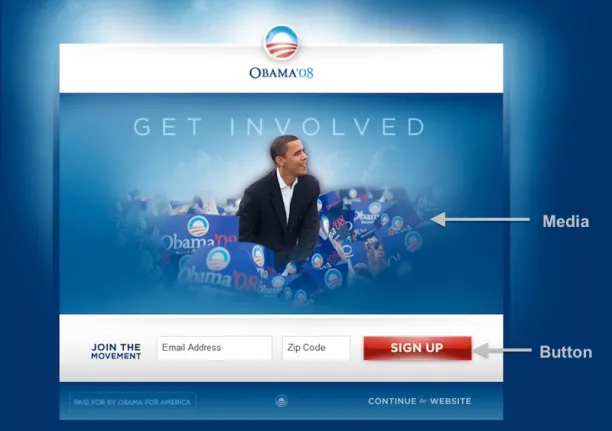
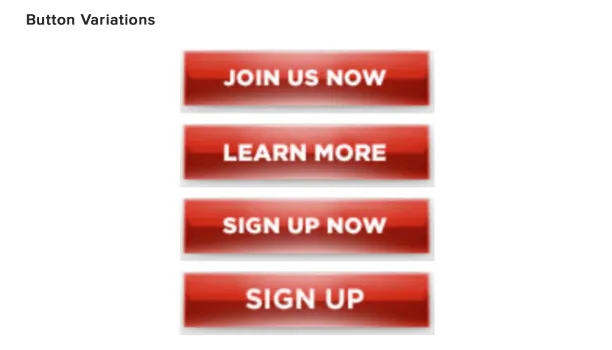
They tried 24 (4 buttons x 6 media) combinations. After testing with 310,382 visitors, the winning combination was the media where he is with his family and the “Learn More” call-to-action button. This combination had a sign-up rate of 11.6%, where the original page had a sign-up rate of 8.26%. The increase in conversion rate resulted in additional 2,880,000 email addresses on their email list, translating into an additional $60 million in donations.
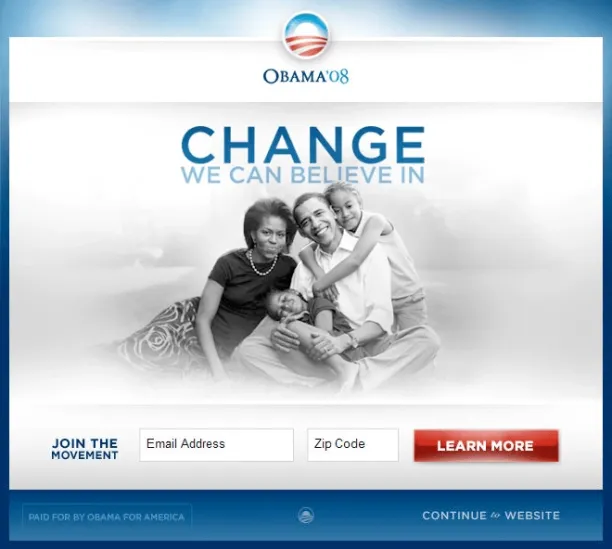
Facebook reduced account deactivations
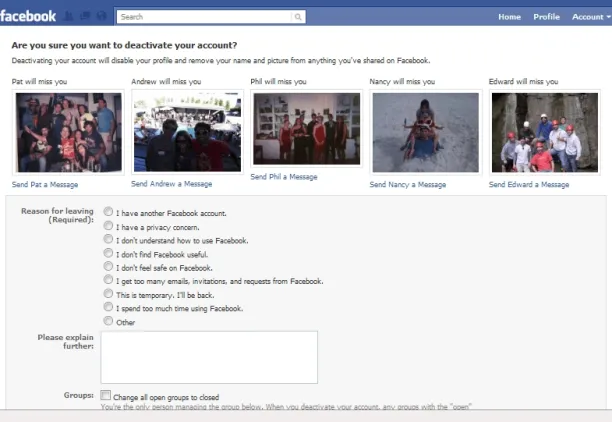
As a behavior and persuasion technique, in the account deactivation page, Facebook displayed photos of users’ friends, added a message “Your friends will miss you.” and enabled users to send a message. This technique reduced deactivation rates by 7%, which accounts for a million more users per year.
Paul Evans NY increased conversion rate by 11%
Paul Evans NY, a direct-to-consumer manufacturer of luxury men’s footwear, adds a message displaying how many shoes (size and style) are currently in stock. This leads the company to increase the conversion rate by 11% in 97% statistical significance.
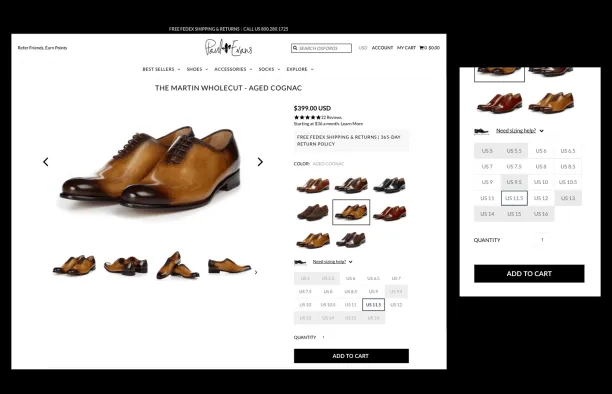
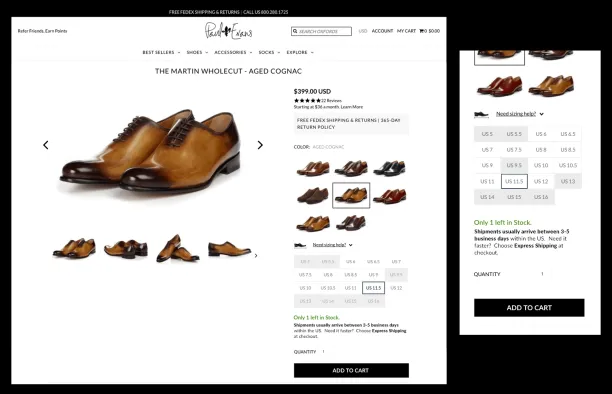
WikiJob increased sales by 34%
WikiJob, UK’s largest financial services graduate careers website, tested social proofs that whether it can help in the sales process or not. Displaying three testimonials from customers increased their sales by 34%.
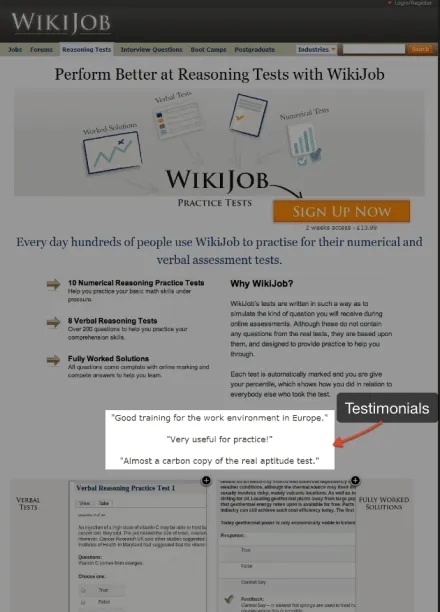
How does the CRO vendor landscape look like?
The core of conversion rate optimization is making changes on a webpage and comparing the alternate version with the original page using methodical testing practices. Yet, there are two CRO types of tools in the vendor landscape:
- Pure testing tools: Marketers formulate experiments and Vendor is focused on testing to discover the best way to increase website, campaign, or landing page conversion rates
- Insight generation tools: These vendors combine customer intelligence with conversion optimization. Vendors analyze the audience and then create personalized messages and layout that appeal to that particular audience.
- Tools that offer both: Vendors like Tup Solutions leverage cookies, on-screen, weather, news, and demographic data to provide users customized product pages.
If you want to learn more on conversation rate optimization vendors, please check our sortable CRO vendors list, our research on how we categorized these tools or contact us:
If you still have questions on conversion rate optimization, feel free to download our in-depth whitepaper on the topic:

Cem has been the principal analyst at AIMultiple since 2017. AIMultiple informs hundreds of thousands of businesses (as per similarWeb) including 60% of Fortune 500 every month.
Cem's work has been cited by leading global publications including Business Insider, Forbes, Washington Post, global firms like Deloitte, HPE, NGOs like World Economic Forum and supranational organizations like European Commission. You can see more reputable companies and media that referenced AIMultiple.
Throughout his career, Cem served as a tech consultant, tech buyer and tech entrepreneur. He advised businesses on their enterprise software, automation, cloud, AI / ML and other technology related decisions at McKinsey & Company and Altman Solon for more than a decade. He also published a McKinsey report on digitalization.
He led technology strategy and procurement of a telco while reporting to the CEO. He has also led commercial growth of deep tech company Hypatos that reached a 7 digit annual recurring revenue and a 9 digit valuation from 0 within 2 years. Cem's work in Hypatos was covered by leading technology publications like TechCrunch and Business Insider.
Cem regularly speaks at international technology conferences. He graduated from Bogazici University as a computer engineer and holds an MBA from Columbia Business School.
To stay up-to-date on B2B tech & accelerate your enterprise:
Follow on
Comments
Your email address will not be published. All fields are required.